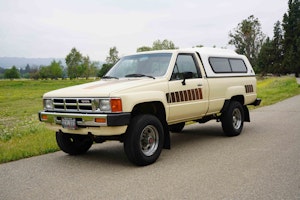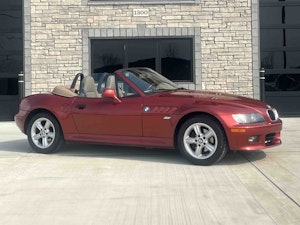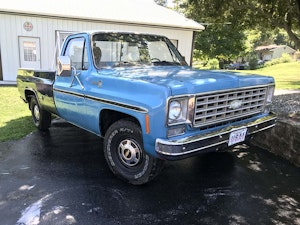Media | Articles
How 2JetZ brought Hot Wheels full circle
Luis Rodriguez, creator of the 2JetZ (pronounced “two-jet-z”) that won the 2018 Hot Wheels Legends Tour, is one of millions of car buffs whose first car was a Hot Wheels toy. Come next year, the miniature version of 2JetZ, now under development, may well become the first Hot Wheels toy for many children around the world.
In essence, 2JetZ completes a circle that began 50 years ago. Rodriguez is one of many inspired by the toys to later modify and build their own cars, and now Hot Wheels is returning the love.
Launched by Mattel in 1968, Hot Wheels sparked a global phenomenon that’s been pedal-to-the-metal for half a century. Sales passed the 6 billion mark in early 2018, and Hot Wheels remains the world’s best-selling toy. What began as a toy rendition of the car culture long ago became an integral part of it.
20181220165310)
At a time when England’s Matchbox, Corgi, and Dinky miniatures dominated the toy car scene, Hot Wheels cars were a revelation. The bright Spectraflame-painted models miniaturized the muscle car, hot rod, and custom car world to capture kids’ imaginations as no toys had done before. The British models recreated mostly production vehicles, including European cars unfamiliar to American kids. (Corgi’s James Bond Aston Martin DB5, however, is still among the world’s best-known model cars.)
Marketplace
Buy and sell classics with confidence
Plus, Hot Wheels were more fun to play with. With oversized plastic “redline” tires that resembled muscle car mag wheels, they rolled faster across a floor than other toy cars and offered even more childhood thrills on the brand’s famous orange track.
For big kids, too
20181220165351)
For five decades, Hot Wheels has constantly innovated to keep its products and its place in the car culture fresh and relevant. It has remained on-trend with the pop culture, as well, notably through tie-ins with movies, TV shows, real-car events, and video games.
What’s more, Hot Wheels have long been the toys that many kids never outgrow, and Mattel has creatively mined this brand loyalty and nostalgia connection. Building life-size versions of iconic Hot Wheels models like the Twin Mill and Deora II, and licensing Chevrolet to build Hot Wheels Edition Camaros in 2013 and 2018 has made decades-old childhood fantasies come true.
How a real car becomes a Hot Wheels car
20181220165316)
Since the 2JetZ is not a production car, there are no plans, blueprints, or technical drawings to work from. Yet, the process of making it into a model, which can take a year or more, starts as it does with every Hot Wheels, according to head designer Ted Wu.
“Our team is used to creating Hot Wheels inspired by real manufactured cars as well as fantastical designs,” Wu says. “In both cases, we still need to make sure the spirit of the vehicle comes out in 1:64 scale. In order to do that, we may take some liberties on where we push and pull the existing lines of a vehicle. Designers will exaggerate wheel size and other vehicle features for performance and aesthetic purposes. For example, the 50th Anniversary Hot Wheels Camaro diecast has much larger wheels.”
The 2JetZ began its transition to the Hot Wheels world with a weeklong stay in the toymaker’s design studio.
20181220165305)
“This project will take a similar approach, beginning with our team of designers, many of whom are auto designers and enthusiasts themselves,” Wu says. “They’ll create a concept based on key elements of the 2JetZ by studying the car in person and through photos.”
Not surprisingly, the biggest change in the Hot Wheels design process over the decades has been the use of technology. It’s not all about computer design and simulation, though. The design team still makes prototypes, but now by using equipment that didn’t exist until recently.
“Being able to touch, feel, and see your design in 3D is a critical part of the process,” Wu explains. “All designs start as a sketch and then quickly move into physical prototyping. In addition to more advanced software, the team also utilizes 3D printing when designing a prototype to print the parts in-house.”
The digital advancements, he adds, allow the design and production teams to speed up the creation and approval process. And that keeps Hot Wheels rolling toward its next billion.
20181220165407)
20181220165300)









